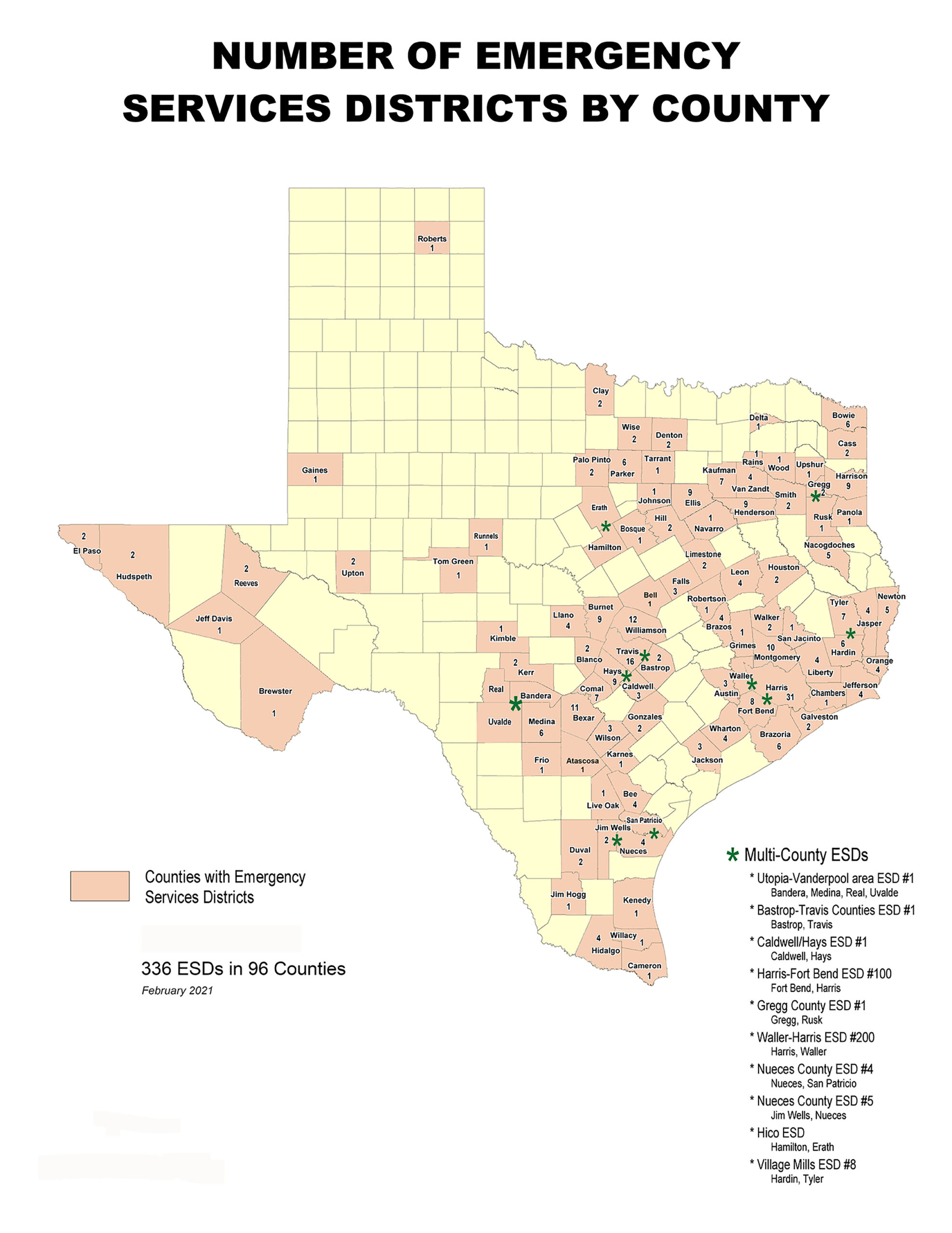Emergency Services Districts
Emergency Services Districts (ESDs) are political subdivisions of the State of Texas. They support or provide local emergency services, including emergency medical services (EMS), ambulance services, rural fire prevention and control, and other services authorized by the Texas Legislature. ESDs may impose sales, use, and/or property taxes to fund these services. Additionally, ESDs can own property, enter contracts, employ officers and staff, accept donations, enforce a fire code, and provide a fire marshal.
This stable funding has significantly reduced fire and medical response times, supported volunteer and other fire and EMS departments, and enhanced services, thereby saving lives, property, and funds for local citizens. It may also improve the Insurance Services Office (ISO) rating within its service area, lowering insurance premiums for businesses and homeowners.
ESDs are created under the Texas Health and Safety Code, Chapters 775, to provide public funding for urban, suburban, and rural emergency services organizations. They are crucial for adequately supporting emergency services in many Texas municipal, suburban, and rural areas.
An ESD collects taxes based on appraisals of real estate, personal property, sales tax, and either contracts with service providers or provides services directly. There are three types of ESDs:
- Fire protection
- Emergency medical services (EMS)
- Both fire protection and EMS
An ESD is governed by a board of commissioners appointed to two-year staggered terms by the County Commissioners Court, including Bexar County. In Harris County and a few select areas of Texas, the ESD Commissioners are elected.
As of 2024, there are 366 ESDs in the state of Texas.

